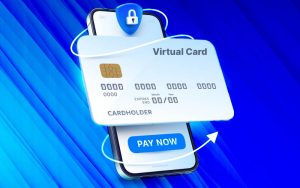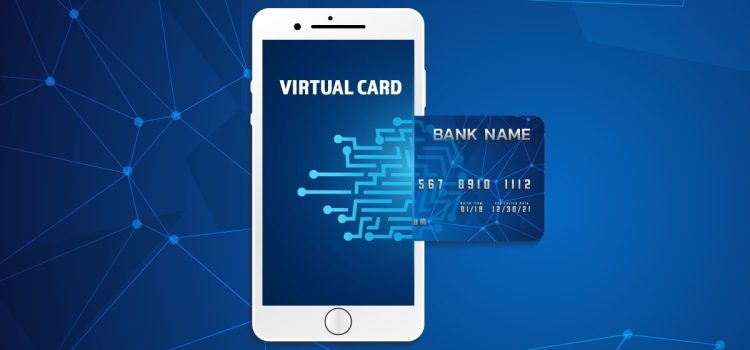
Digital Armor: How Virtual Credit Cards Protect Your Money
Introduction: Meet the Author
Hello, my name is Fred and I am a professional blogger and financial advisor. I have been writing about personal finance, investing, and technology for over 10 years. I am passionate about helping people achieve their financial goals and live a more secure and fulfilling life.
One of the topics that I am most interested in is virtual credit cards. I have been using them for several years and I have seen how they can improve my online security, save me money, and simplify my finances. In this article, I will share with you everything you need to know about virtual credit cards, including what they are, how they work, what are their benefits and drawbacks, how to choose the best provider for your needs, and how to use them safely and effectively.
If you are curious about advanced payment methods and want to protect your money from online fraud, identity theft, and data breaches, then this article is for you. Read on to learn how virtual credit cards can be your digital armor in the online world.
What is a Virtual Credit Card and How Does It Work?
A virtual credit card is a temporary and disposable credit card number that you can use for online transactions. It is not a physical card, but a digital one that you can generate from your smartphone or computer. You can link it to your existing credit card or bank account, or load it with a specific amount of money.
A virtual credit card works like a regular credit card, except that it has a different number, expiration date, and security code. You can use it to make online purchases, subscriptions, or payments, without revealing your real credit card information. You can also set limits and restrictions on your virtual credit card, such as the amount, the merchant, or the duration. Once you use it or it expires, you can delete it and generate a new one.
A virtual credit card is a great way to protect your money and identity from online threats. By using a virtual credit card, you can avoid exposing your real credit card information to hackers, scammers, or data breaches. You can also prevent unauthorized charges, unwanted renewals, or overspending. A virtual credit card gives you more control and flexibility over your online transactions, while keeping your real credit card safe and secure.
What are the Benefits of Using a Virtual Credit Card?
There are many benefits of using a virtual credit card, such as:
- Enhanced security: A virtual credit card reduces the risk of your real credit card information being stolen, compromised, or misused. You can use a different virtual credit card number for each transaction, making it harder for hackers or fraudsters to track or access your data. You can also set limits and restrictions on your virtual credit card, such as the amount, the merchant, or the duration, to prevent unauthorized charges or unwanted renewals. If your virtual credit card is compromised, you can easily delete it and generate a new one, without affecting your real credit card or bank account.
- Cost savings: A virtual credit card can help you save money on fees, interest, or exchange rates. Some virtual credit card providers offer lower or no fees for international transactions, compared to regular credit cards. Some also offer cashback, rewards, or discounts for using their virtual credit cards. You can also use a virtual credit card to avoid paying for subscriptions or services that you no longer use or need, by canceling them before they renew automatically. You can also use a virtual credit card to compare prices or get free trials, without worrying about being charged later.
- Simplified finances: A virtual credit card can help you simplify your finances and manage your budget. You can use a virtual credit card to separate your online transactions from your regular ones, making it easier to track and monitor your spending. You can also use a virtual credit card to allocate a specific amount of money for online purchases, subscriptions, or payments, and avoid overspending or exceeding your credit limit. You can also use a virtual credit card to consolidate your online transactions into one statement, making it easier to pay or review them.
What are the Drawbacks of Using a Virtual Credit Card?
There are also some drawbacks of using a virtual credit card, such as:
- Limited availability: Not all credit card issuers or banks offer virtual credit cards. You may need to sign up for a third-party service or app that provides virtual credit cards, which may charge fees or require verification. You may also need to check if the merchant or website that you want to use accepts virtual credit cards, as some may not recognize or process them.
- Technical issues: A virtual credit card may not work properly or reliably due to technical issues, such as network errors, system failures, or software glitches. You may also lose access to your virtual credit card if you lose your smartphone or computer, or if they are damaged or stolen. You may also need to update or renew your virtual credit card regularly, as they may expire or become invalid.
- Customer service: A virtual credit card may not offer the same level of customer service or protection as a regular credit card. You may have difficulty contacting or reaching the virtual credit card provider, especially if they are a third-party service or app. You may also have trouble disputing or resolving issues or complaints, such as refunds, returns, or chargebacks, as the virtual credit card provider may not have the authority or responsibility to handle them.
How to Choose the Best Virtual Credit Card Provider for Your Needs?
There are many virtual credit card providers in the market, each offering different features, benefits, and drawbacks. To choose the best one for your needs, you should consider the following factors:
- Fees: Some virtual credit card providers charge fees for using their service, such as monthly, annual, or transaction fees. You should compare the fees and choose the one that offers the best value for your money. You should also check if there are any hidden or extra fees, such as currency conversion, withdrawal, or cancellation fees.
- Limits: Some virtual credit card providers impose limits on their service, such as the number, amount, or duration of virtual credit cards that you can generate or use. You should check the limits and choose the one that meets your needs and preferences. You should also check if you can adjust or customize the limits, such as setting your own amount, merchant, or expiration date for your virtual credit cards.
- Rewards: Some virtual credit card providers offer rewards for using their service, such as cashback, points, or discounts. You should compare the rewards and choose the one that offers the most attractive or useful ones for you. You should also check the terms and conditions of the rewards, such as how to earn, redeem, or use them.
- Security: Some virtual credit card providers offer more security features than others, such as encryption, authentication, or verification. You should check the security features and choose the one that offers the highest level of protection for your data and transactions. You should also check the privacy policy and reputation of the virtual credit card provider, and make sure that they do not sell or share your information with third parties.
- Compatibility: Some virtual credit card providers are more compatible than others, meaning that they work with more credit card issuers, banks, merchants, or websites. You should check the compatibility and choose the one that works with your existing credit card or bank account, and the online platforms that you want to use. You should also check the availability and accessibility of the virtual credit card provider, and make sure that they operate in your country or region, and that they have a user-friendly website or app.

How to Use a Virtual Credit Card Safely and Effectively?
To use a virtual credit card safely and effectively, you should follow these tips:
- Generate a new virtual credit card for each transaction: This will reduce the risk of your virtual credit card information being stolen, compromised, or misused. You will also avoid unauthorized charges, unwanted renewals, or overspending. You can delete the virtual credit card after you use it or it expires, and generate a new one for the next transaction.
- Set limits and restrictions on your virtual credit card: This will give you more control and flexibility over your online transactions, while keeping your real credit card safe and secure. You can set limits and restrictions on your virtual credit card, such as the amount, the merchant, or the duration. You can also change or cancel the limits and restrictions if you need to.
- Use a reputable and reliable virtual credit card provider: This will ensure that you get the best service and protection for your money and data. You should choose a virtual credit card provider that offers low or no fees, high or no limits, attractive or useful rewards, strong or advanced security features, and wide or easy compatibility. You should also check the reviews and ratings of the virtual credit card provider, and make sure that they have good customer service and support.
- Keep track and monitor your virtual credit card transactions: This will help you simplify your finances and manage your budget. You should keep track and monitor your virtual credit card transactions, such as the number, amount, or date of your virtual credit cards, and the merchants or websites that you use them for. You should also review your virtual credit card statements, and make sure that there are no errors or discrepancies. You should also pay or settle your virtual credit card bills on time, and avoid late fees or interest charges.
Conclusion: Virtual Credit Cards are the Future of Online Shopping
Virtual credit cards are a great way to protect your money and identity from online threats, save money on fees, interest, or exchange rates, and simplify your finances and manage your budget.










